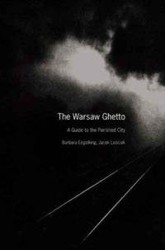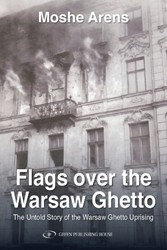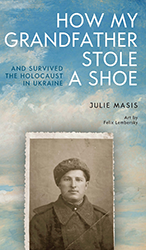If there is one book that should be read this year (or any year) about the Holocaust it is Who Will Write Our History, wherein historian Samuel Kassow provides us with the history of the Oyneg Shabes Archive, a project organized in the Warsaw Ghetto by Emanuel Ringelblum, a historian, to describe Nazi measures against Jews trapped in a ghetto, where starvation, typhus, forced labor, and deportation were the realties of everyday life.
Between the outbreak of war in September 1939 to the summer of 1942, Ringelblum managed to assemble a number of teachers, rabbis, scholars, writers, businessmen and idealistic young people to collect data on the trials and tribulations of the Jews in the Warsaw Ghetto. Taking great risks, the compilers of the archive wrote of Nazi cruelty toward the Jews, Polish-Jewish relations, as well as the seeming collaboration of the Warsaw Jewish Council and Jewish police with the occupiers, so that future generations would have an account of what transpired in the ghetto. But there were risks associated with the project, both physical — the Nazis would execute anyone associated with the archive — and existential. As Isaac Shiper, one of the writers subsequently told a fellow inmate in the Majdanek concentration camp, “Everything depends on who transmits our testament to future generations, on who writes the history of this period. History is usually written by the victor. What we know about murdered people is only what their murderers…cared to say about them.… But if we write the history of this period of blood and tears…who will believe us? Nobody will want to believe us, because our disaster is the disaster of the civilized world.”
To document the Nazi cruelty, therefore, was to resist. During the Holocaust powerless Jewish men, women, and children faced death, yet there were individuals who were determined to confront the Nazis with pen and paper, and through works of art, powerful weapons that they hoped would record the crimes of the perpetrators. More than anyone else it was Emanuel Ringelblum who encouraged the participants in the Oyneg Shabes Archive to record what they observed, and who organized and conceptualized the articles and questionnaires into a powerful center of civil resistance.
Fearing that the archive would be found by the Nazis, Ringelblum and his staff gathered the information about the Nazi killings and buried them in three separate caches. The first was uncovered in 1946, the second in 1950, and the third cache, which would have documented the critical months of the Warsaw Ghetto Uprising, was never found. Together, however, the archives constitute the most significant eyewitness accounts of the Warsaw Ghetto and the travails suffered by its incarcerated Jewish victims. Facing an uncertain future but sensing that death hovered over the ghetto, Israel Lichtenstein, burying the first cache of the archive in 1942, concluded his testament with the following words: “We are the redeeming sacrifice of the Jewish people. I believe that the nation will survive. We the Jews of Eastern Europe are the redeemers of the People of Israel.” Lichtenstein, who would not survive the genocide, reminded posterity that Jews were not just victims: they were people and part of a resilient nation. This was also Ringelblum’s legacy, the legacy of the Oyneg Shabes Archive.




